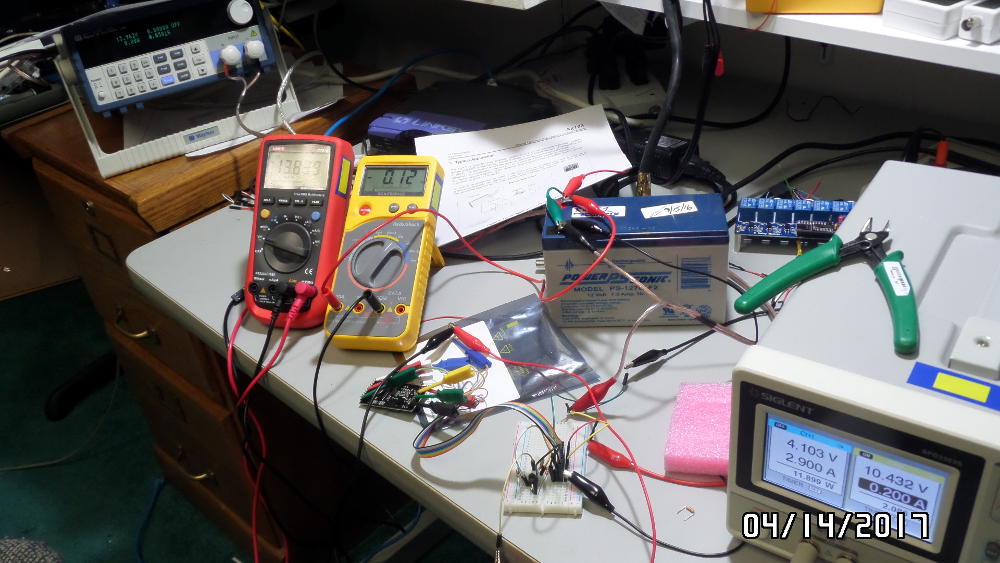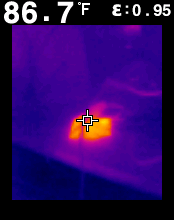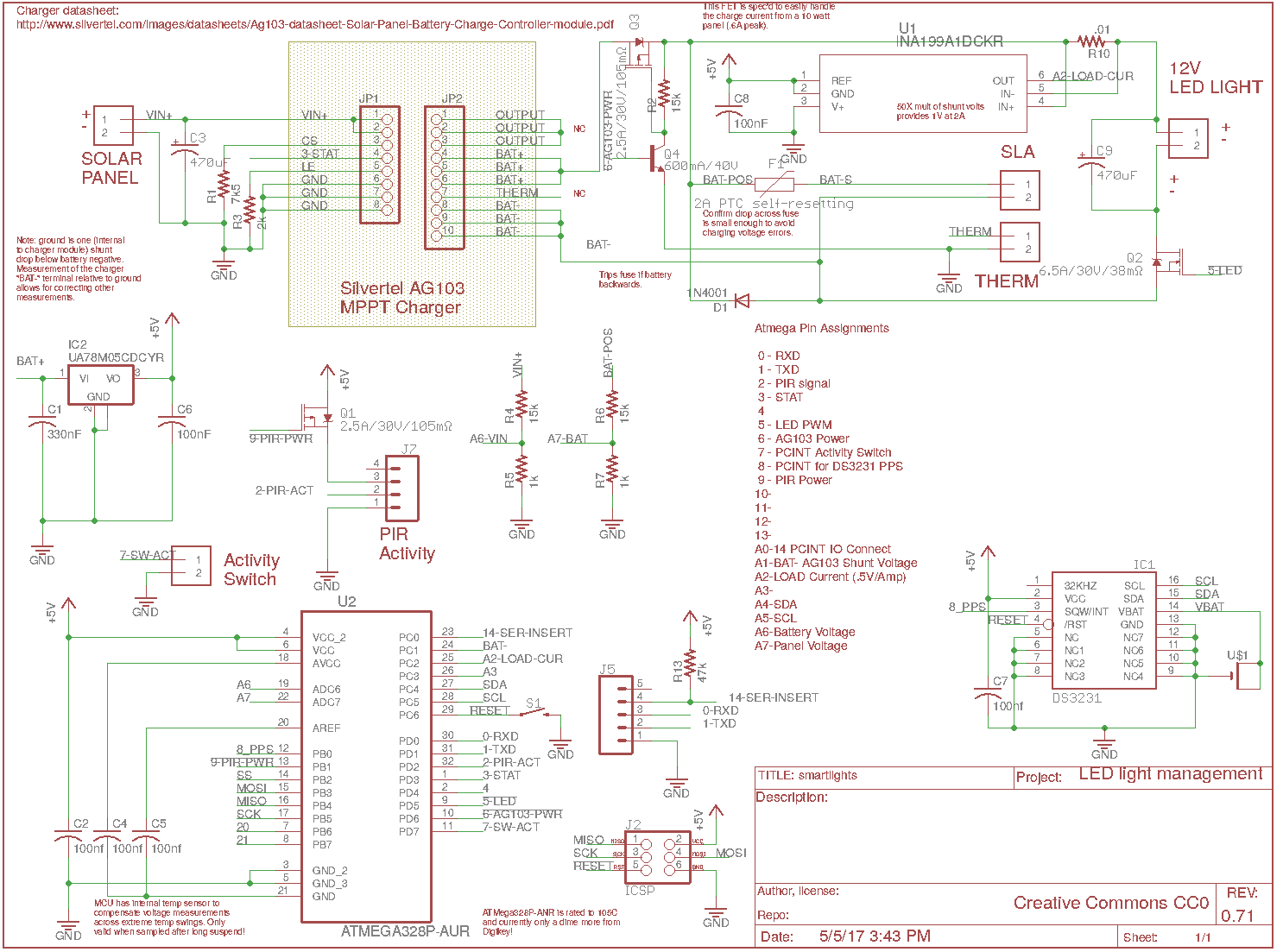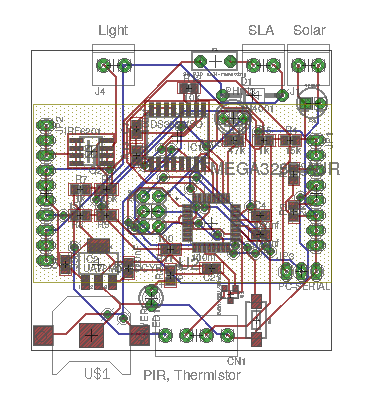Difference between revisions of "SmartLights"
(→Motion activated lighting with solar charged battery power) |
(→Motion activated lighting with solar charged battery power) |
||
| Line 2: | Line 2: | ||
== Motion activated lighting with solar charged battery power == | == Motion activated lighting with solar charged battery power == | ||
Here's the problem space. A relatively high powered LED light (four feet of 60/meter LEDs) that consumes about 17 watts is being powered by a 7Ah sealed lead acid battery and the available power for recharging the battery is from a 2 1/2 watt solar panel. Figuring roughly 10 watt hours out of the panel on a given day, there is only enough power to run the LEDs for 35 minutes every 24 hours. So if the LED lights aren't very very smart they'll be useless. | Here's the problem space. A relatively high powered LED light (four feet of 60/meter LEDs) that consumes about 17 watts is being powered by a 7Ah sealed lead acid battery and the available power for recharging the battery is from a 2 1/2 watt solar panel. Figuring roughly 10 watt hours out of the panel on a given day, there is only enough power to run the LEDs for 35 minutes every 24 hours. So if the LED lights aren't very very smart they'll be useless. | ||
| + | |||
| + | The basic strategy will be to pay attention to light/dark cycles and running average usage to pick a default LED light level (determined by PWM switching of power to the LEDs), then wait a few seconds after motion is detected near the lighted area, and turn the lights on. The PIR sensor will be hacked to allow as much precision as possible with the determination of "motion vs no motion". After some number of seconds of no motion the lights will be turned off. Alternatively, depending on the state of the battery, the lights will be dimmed before being turned off completely. | ||
| + | |||
| + | If none of this is enough there may have to be a simple vibration sensor and some kind of sign to "tap to turn the light back on". Alternatively, additional solar panels can be added and/or the lighting can be reconfigured to be as efficient as possible. | ||
== Initial charger circuit testing (Silvertel ag103 MPPT charger is small board near corner of yellow meter == | == Initial charger circuit testing (Silvertel ag103 MPPT charger is small board near corner of yellow meter == | ||
Revision as of 17:06, 14 April 2017
Motion activated lighting with solar charged battery power
Here's the problem space. A relatively high powered LED light (four feet of 60/meter LEDs) that consumes about 17 watts is being powered by a 7Ah sealed lead acid battery and the available power for recharging the battery is from a 2 1/2 watt solar panel. Figuring roughly 10 watt hours out of the panel on a given day, there is only enough power to run the LEDs for 35 minutes every 24 hours. So if the LED lights aren't very very smart they'll be useless.
The basic strategy will be to pay attention to light/dark cycles and running average usage to pick a default LED light level (determined by PWM switching of power to the LEDs), then wait a few seconds after motion is detected near the lighted area, and turn the lights on. The PIR sensor will be hacked to allow as much precision as possible with the determination of "motion vs no motion". After some number of seconds of no motion the lights will be turned off. Alternatively, depending on the state of the battery, the lights will be dimmed before being turned off completely.
If none of this is enough there may have to be a simple vibration sensor and some kind of sign to "tap to turn the light back on". Alternatively, additional solar panels can be added and/or the lighting can be reconfigured to be as efficient as possible.
Initial charger circuit testing (Silvertel ag103 MPPT charger is small board near corner of yellow meter



